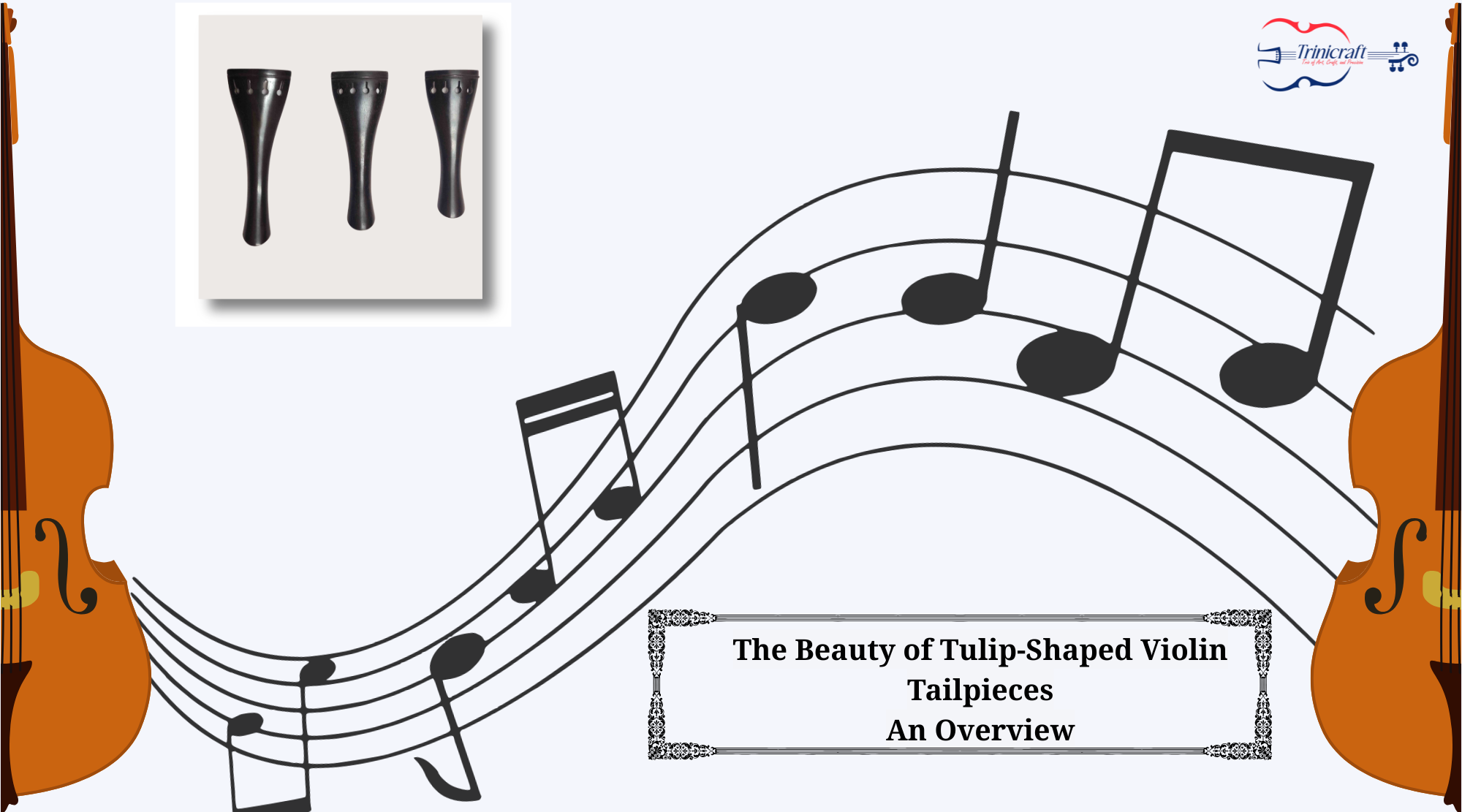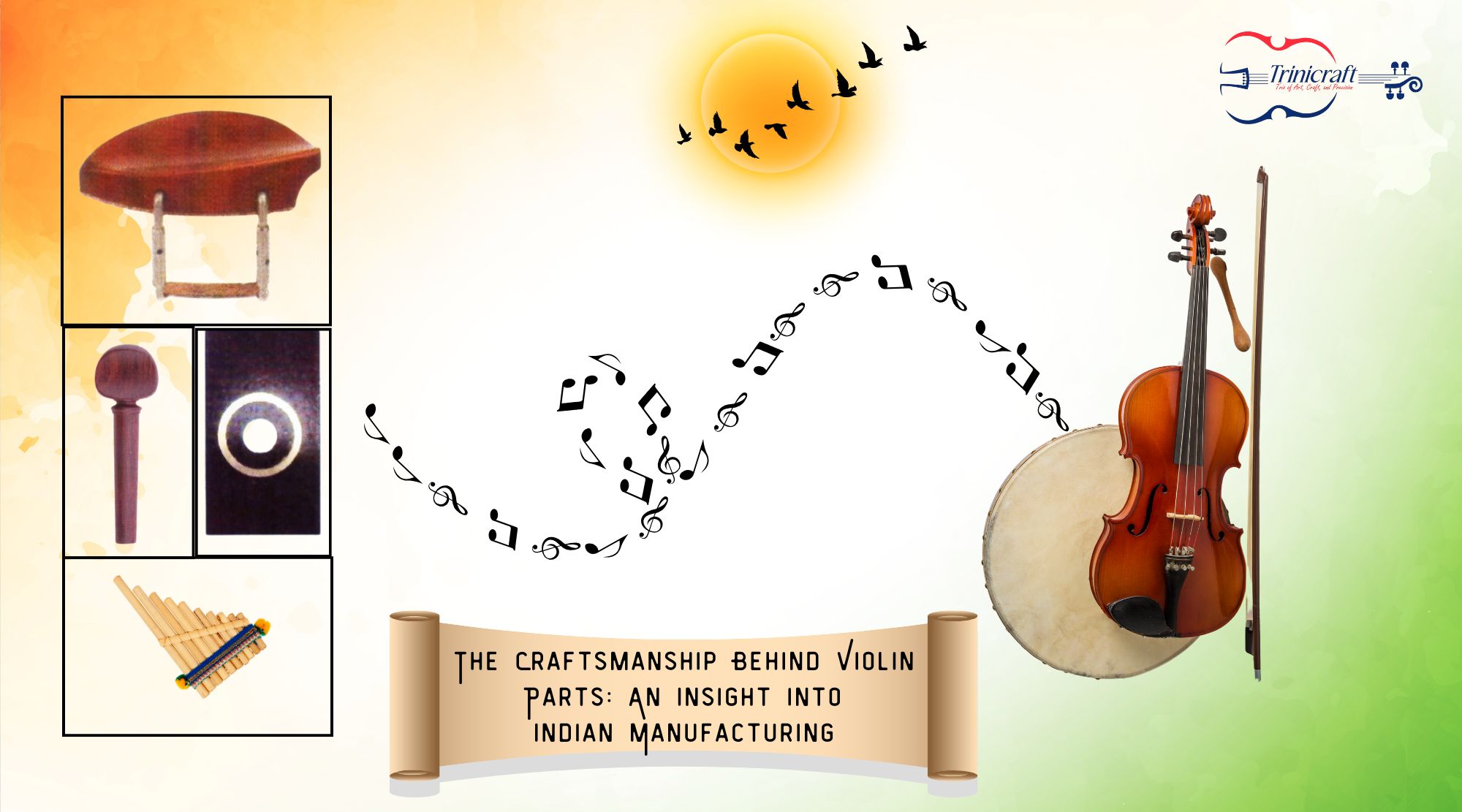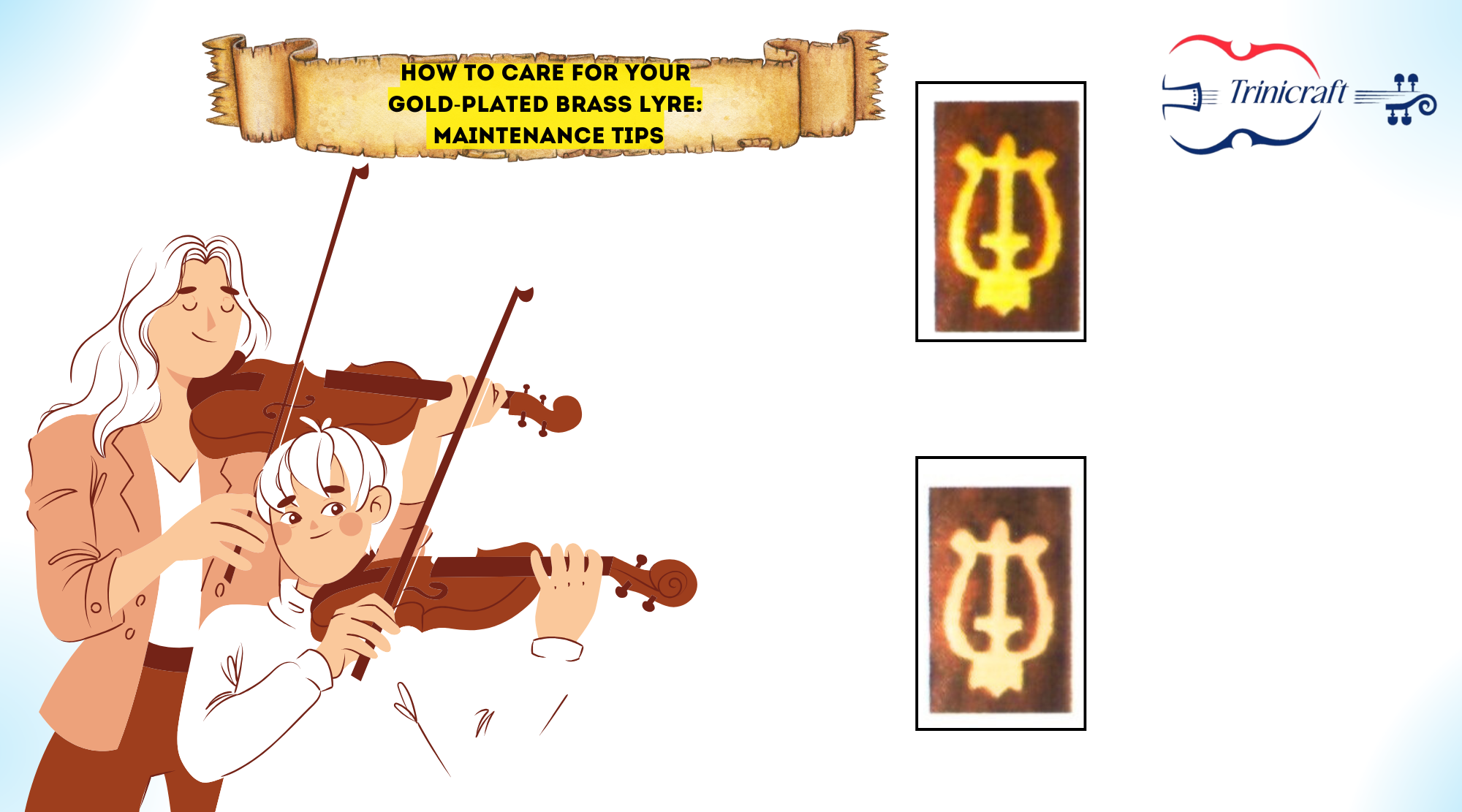A Violin is an instrument that has a perfect blend of tradition and melody. Every detailed part of a violin plays an important role in its beauty and sound. One of the most exquisite yet often overlooked parts of the violin is its tailpiece. Among all the violin parts and components, the Tulip Shaped Violin Tailpiece in Ebony Wood stands apart for its charm and functionality. It’s a popular choice for Luthiers as well as musicians all across. Let’s explore the factors that make it an incredible object and a preferred choice for many.
Aesthetism and a Timeless Classic
A Tulip Shaped Violin Tailpiece in Ebony Wood adds charm and elegance to a violin. Inspired by the soft, flowing shape petals of the tulip flower, this design brings an elegant charm to the violin’s overall appearance. The seamless curve of the tailpiece makes the entire violin look visually appealing and flawless. The material known as ebony wood provides a deep, rich colour that shines throughout, maintains durability, and enhances the violin’s overall aesthetic.
Ebony wood: The perfect choice.
Ebony wood is the best choice for its durability, sound, rich colour, and is the right material for crafting a violin tailpiece. Unlike other materials, ebony wood has resistant properties that endure wear and tear, even after frequent use. It also has a natural luster that requires less maintenance, keeping it beautiful for years. Moreover, the weight of the material plays an important role in better sound quality and tone. Due to its hardness, it holds up the string, maintaining the overall balance of the instrument. It’s a highly recommended material for musicians as well as artisans.
Enhancing sound and performance.
As mentioned earlier, ebony wood has a key functional role along with its elegant appearance. The unique shape evenly distributes the tension across the strings equally, for better sound quality and resonance. Musicians often find it smooth and balanced to tune while using the tailpiece. Additionally, its curved design makes it comfortable for players while reducing strain and enhancing melodic tuning stability.
The most favourite and recommended one among luthiers and violinists.
Luthiers always suggest going for a tulip-shaped tailpiece for its perfect combination of beauty and functionality. It makes it easier and smoother to use, even for a beginner or professional violinist. It enhances both the beauty and sound of the instrument simultaneously. The handcrafted masterpiece and high-quality material make it the most searched and opted-for choice. Luthiers select the finest ebony wood, ensuring that it results in fine-tuning quality and artistry.
Conclusion-
The Tulip-shaped violin tailpiece is more than just an elegant part of an instrument. It plays a key role in improving sound quality, resonance, and durability. If you want to upgrade your instrument or are someone who likes fine craftsmanship, consider opting for a tulip-shaped tailpiece, which enhances the overall appearance of the instrument. The Tulip-shaped tailpiece reminds us that even a small, intricate part of a violin can contribute to the overall brilliance and functionality.


